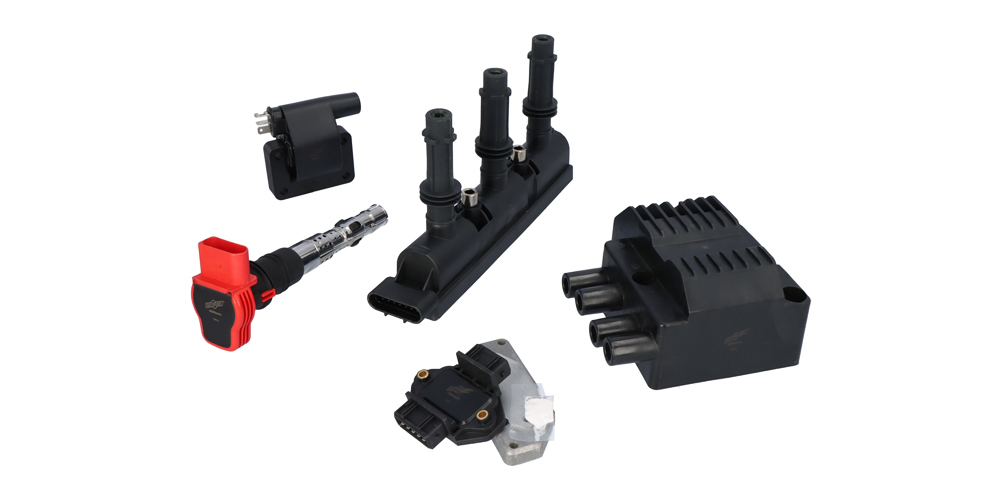In addition to primary current limitation and dwell angle control, the ignition system control unit required for this also has a spark-free quiescent current cut-off. When replacing, heat-conducting paste should be applied between the heat sink on the rear and the vehicle body to ensure a long service life.
Modern ignition systems are usually integrated into the engine control unit as a subsystem. The speed pulse is generated via a crankshaft pulse generator (static high-voltage distribution). A variety of ignition modules are used, the most common being ignition coil rails, single-spark ignition coils, compact ignition coils, rod coils or dual-spark ignition coils. These electronic ignition systems work with any engine characteristics map, which means that the ideal ignition timing is always selected. The earliest possible point in time is determined by the knock limit, the latest point in time by the combustion limit or the highest permissible exhaust gas temperature. Here, knock sensors detect deviations from the calculated value, which can occur due to e. g. poor fuel quality.
Malfunction
Misfiring can lead to damage or destruction of the catalytic converter, poorer emission values, increased fuel consumption and loss of performance. These faults are detected by the OBD function (misfire monitoring) and indicated by the check engine light (or malfunction indicator lamp – MIL). The log read from the data memory provides further details, e.g. which cylinder is affected, when and how often the fault occurred etc. A simple visual inspection can help to determine the cause of the failure. If the fault cannot be localized here, further testing is possible, e.g. using a multimeter and comparing the measured values to the ones provided by the vehicle manufacturer.
Common causes of failure
Defective output stages in the control unit can lead to overheating within the ignition coil and, in conjunction with high outside temperatures, to irreparable damage. If the vehicle still has an ignition system control unit, this should always be replaced as a precaution when replacing the ignition coil. Leaky valve cover gaskets can damage the insulation of rod ignition coils, leading to sparkover and misfiring. This can also lead to high contact resistances and thermal overloading of the materials. In other cases, leaking windshield spray nozzles in the hood can lead to standing water on the ignition coils due to incorrectly designed components. The slowly penetrating moisture in the area of the primary and secondary coils then also causes premature failure. Incorrect handling of the ignition coil during installation can lead to breakage or fine hairline cracks, and ultimately to short circuits due to moisture ingress. In general, the ignition coil is a part subject to extensive wear that needs to be checked regularly and should be replaced if required.
